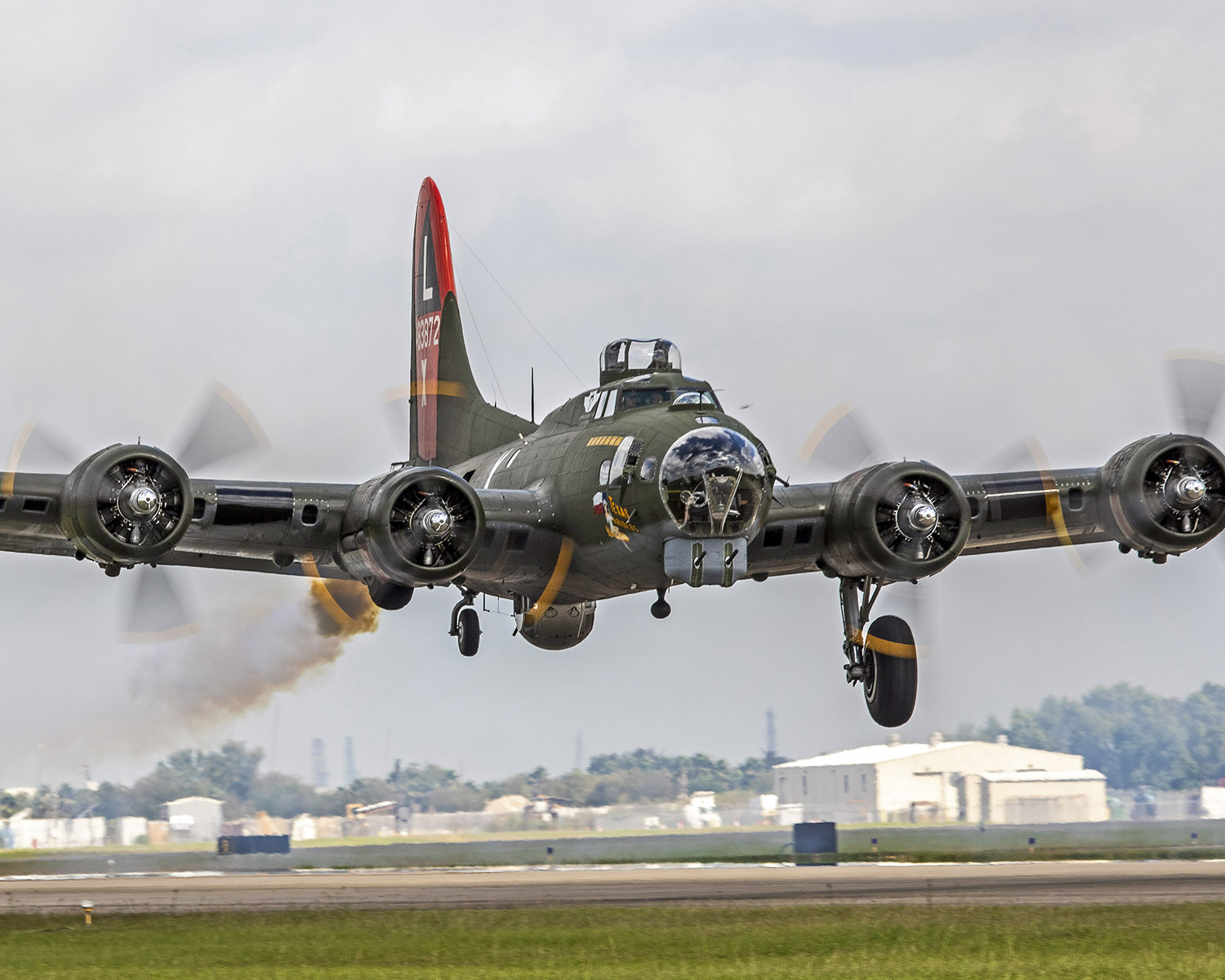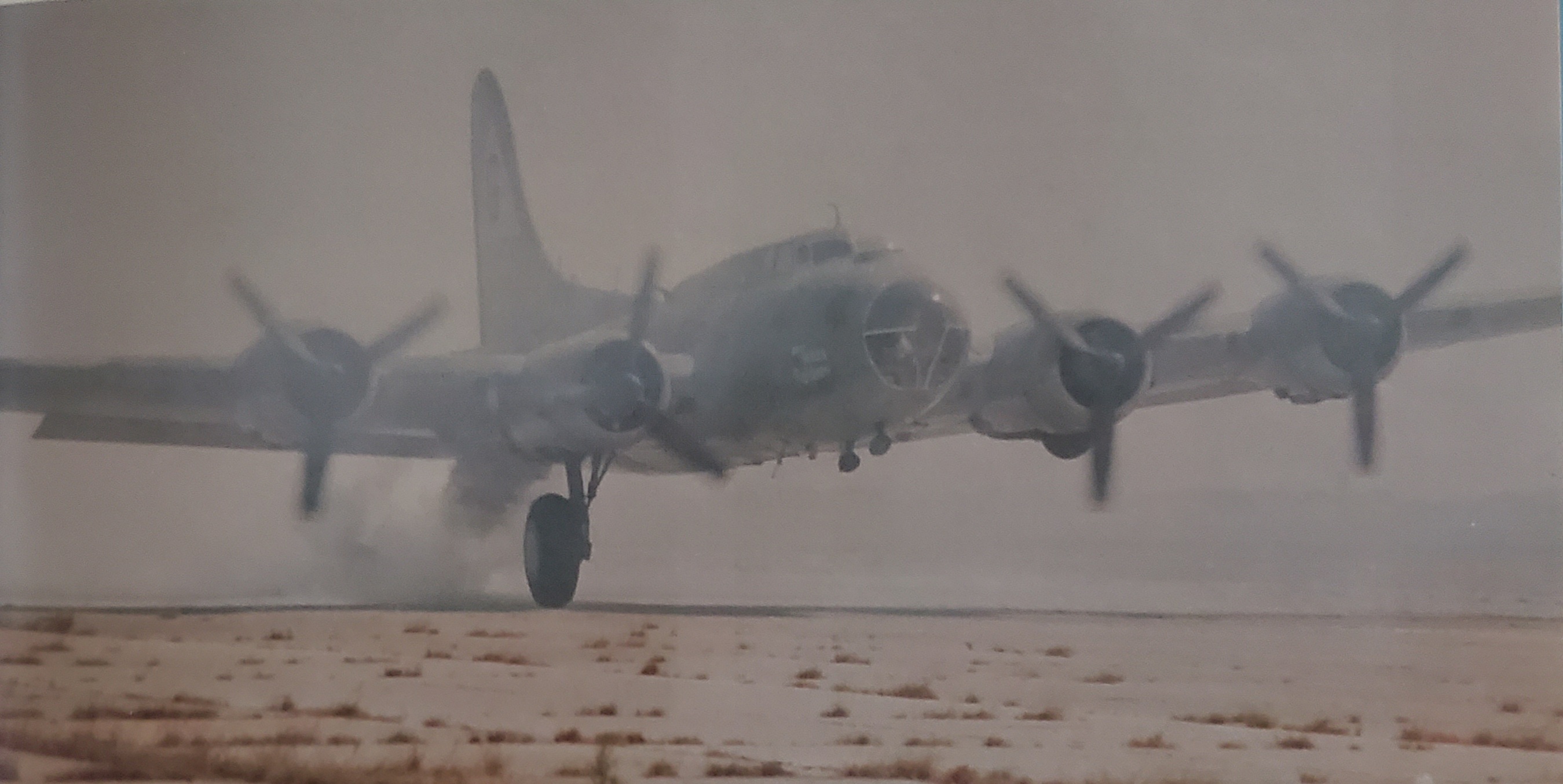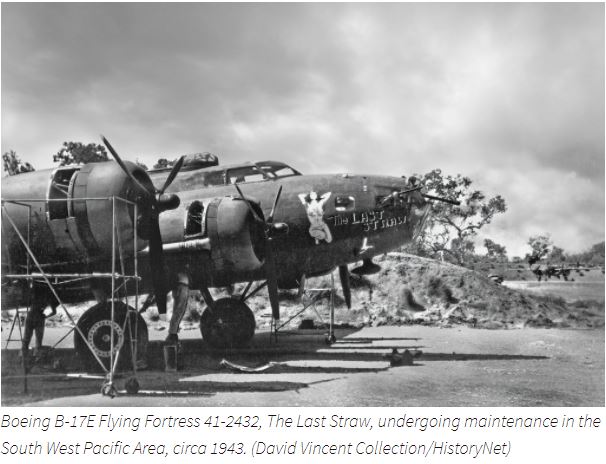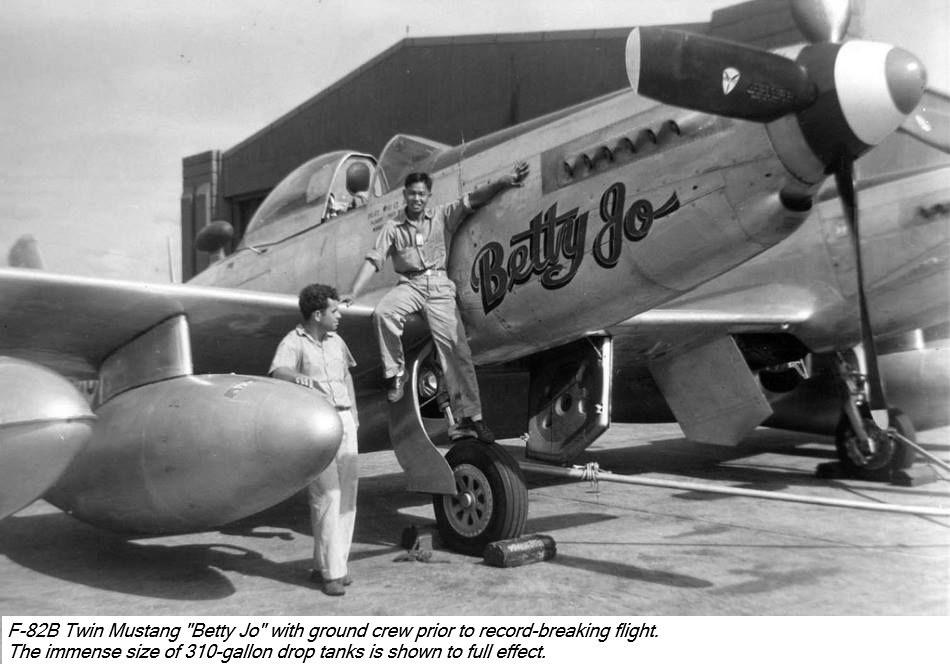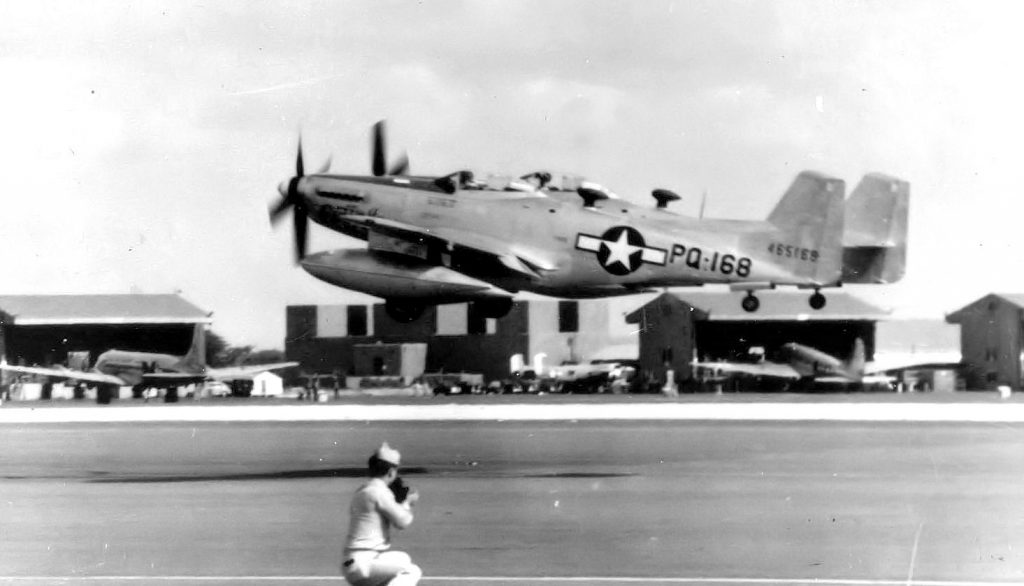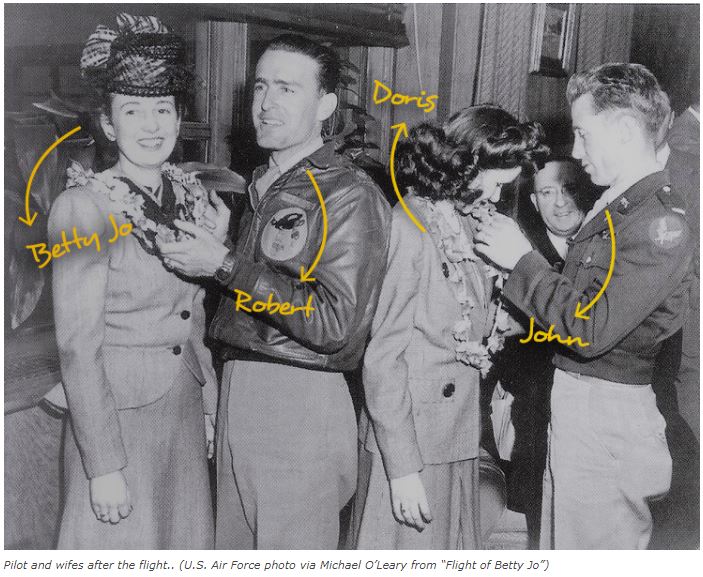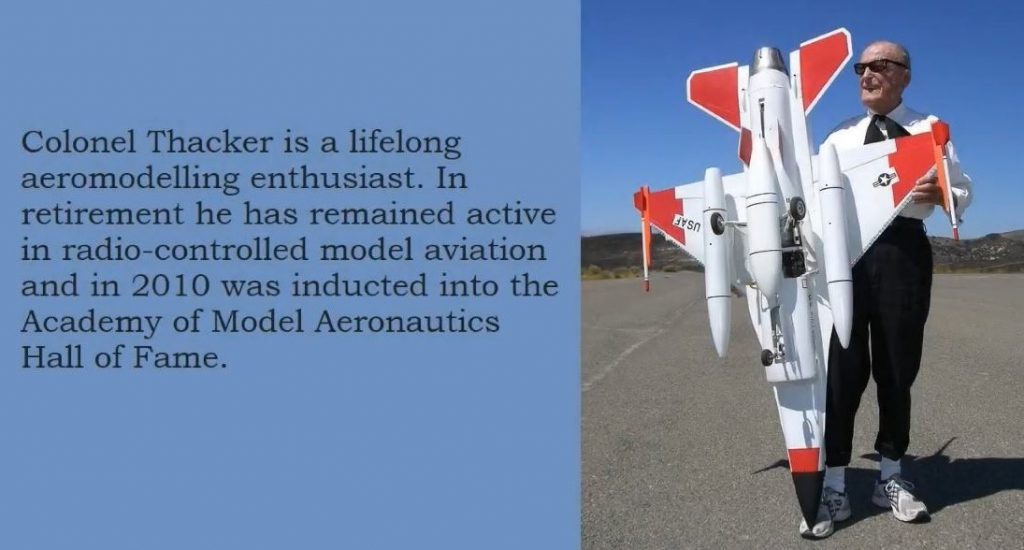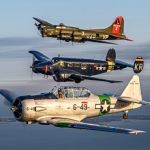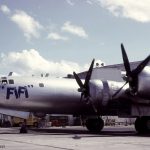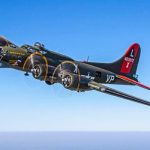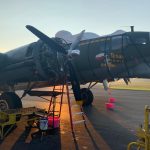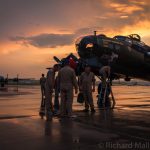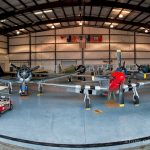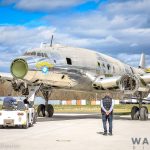By Kevin “K5” Michels, edited by Stephen Chapis
Following his previous article about the evolution of the nose art on the CAF Gulf Coast Wing’s B-17 Texas Raiders, Kevin “K5” Michels recently submitted another excellent article that detailed the history behind the famous one-wheel pass performed by Texas Raiders at air shows across the country.
Donning his distinctive flat-brim straw hat, an otherwise non-descript elderly man would leave his home for a daily 5-mile walk, telling his beloved wife that he was “going out to chase girls”. He would return four hours later. Not because he was slow, but because the gregarious extrovert socialized with literally everyone along the way. Known to all as “the Colonel”, he was a pillar of society in this seaside community of San Clemente, California.
The New York Times has only so much space in its newspaper, and thus holds a high bar for its obituary section. Robert Eli Thacker warranted nearly a full page. Born February 21, 1918, Robert died peacefully at home on November 25, 2020 at the age of 102, leaving a gaping hole in his community and a broken heart in the chest of everyone he touched during his incredible life.
You could be forgiven for not knowing the name Robert Thacker, since you are unlikely to live in San Clemente. But I can almost guarantee that you know one or more of his exploits. Thacker was most famous for flights that originated or terminated in Hawaii. One of each in fact (hint, hint). Thacker was also a 31-year Air Force officer who flew combat missions in World War II, Korea, and Vietnam. During his amazing career, Thacker was awarded two Silver Stars, three Distinguished Flying Crosses, ten Air Medals, and the French Croix de Guerre with Palm. Robert Eli Thacker was truly extraordinary. In retirement Robert let no grass grow under his feet, continuing to contribute society and industry while being given a long list of awards and accolades. In total, Robert Thacker’s life was one many aspire to, but few achieve.
Early Life
Robert Eli Thacker grew up in the farming community of El Centro, California as the second of three children. He attended a local community college where he earned an associate degree in Engineering. He signed up for the Army’s Air Cadet program, eventually winning his wings in the summer of 1940. The newly commissioned 2nd Lieutenant Thacker was first assigned to the 88th Reconnaissance Squadron where he flew twin-engine B-18 Bolos from Hamilton Field, California and Douglas Airfield, Utah. On March 3, 1941, Robert married his college sweetheart, Betty-Jo Smoot, and it lasted for the next 70 years.
On December 3, 1941, Lt. Thacker’s story gets interesting. He was ordered to go to Boeing’s plant in Seattle and pick up a brand-new B-17E, but Thacker had no time in B-17s or any four-engine aircraft for that matter. However, orders were orders, and Thacker managed to get the B-17E back to Douglas Airfield in one piece. Two days later the squadron was flying endurance tests with the new aircraft when Douglas got socked in by weather, forcing Thacker’s flight to divert to divert to Tucson, Arizona. Upon landing they received odd orders to refuel immediately and report to Hamilton Field and await further orders. No sleep for the crews that night.
Flight To Hawaii
Upon arriving at Hamilton, they were given orders to fly to Clark Field, Philippines to bolster the islands’ defenses. The B-17s were to leave that night, giving the crews less than half a day to prepare, thus depriving them of yet another night’s sleep. The Fortresses were quickly modified and equipped for a long over-water flight, which is to say that they swapped as much dead weight for fuel as possible. The brand-new aircraft were loaded with 50-caliber machine guns, but since there was no action expected until they neared the Japanese-controlled areas of the Pacific, they remained in their crates. The plan was to uncrate them and load up and take on ammunition at one of the waypoints. Given everything that was known at that moment, it was a good plan. Unfortunately, the flight departed Hamilton on the evening of December 6, 1941.
A total of fourteen B-17s were scheduled to depart that night, but two aborted due to mechanical issues, leaving eight B-17Es and four B-17Cs to make the 14+ hour flight to Hickam Field on the Hawaiian Island of Oahu. Thacker was the aircraft commander of B-17E, USAAF #41-2432, which had been named The Last Straw. As the bedraggled crews, having already gone more than 24 hours without sleep, droned towards Hawaii, their watches clicked over past midnight. It was now December 7, 1941. On Oahu, the Army requested, and subsidized, Honolulu’s KGMB radio station to remain on the air all night, so the B-17’s navigators could use the signal as a homing beacon. As we know today, the Japanese used that broadcast for the same purpose. Unbeknownst to the B-17 crews, they were about to become unwitting participants in one of history’s most notorious events.
Thoroughly exhausted and with nearly empty fuel tanks, twelve crews and their B-17’s arrived over Oahu at almost the same time as the first wave of Japanese attackers. Mass confusion reigned. Hickam’s air control tower initially cleared the B-17s to land, but then frantically directed them away. As the Japanese attack got underway, anti-aircraft gunners fired on the Japanese aircraft and the B-17s! Without enough fuel to orbit and wait out the attack, the Fortress crews spread across the island looking for alternate landing fields.
An experienced pilot today can appreciate what happened next, especially when one considers that Thacker was just 23 years old, had been awarded his wing just 18 months prior, and was about to attempt just his fourth or fifth landing ever in a B-17. In a 2018 interview, Thacker described himself at that moment as being “wholly unqualified” to fly the plane. Now he was under attack, out of fuel and out of options, so he lined up his B-17 for a crosswind landing on the airfield’s short runway. While on final, three Zeroes swooped in and shot the right main landing gear to pieces. Despite the deck that was stacked against him, Thacker got the plane down in one piece, ground-looped at the end of the runway and brought the plane to a halt. With his wits still about him Thacker ordered his men to take cover in the adjacent swamp rather than a nearby hangar. Over the next hour both the hangar and flight line were destroyed by Japanese attackers in a series of massive explosions. Thacker was one of only three B-17 pilots to land his plane at Hickam Field as planned. The others were 1st Lt. David G. Rawls in B-17E USAAF #41-2434 and Lt Brandon in B-17E USAAF #41-2433.
In 1970, Hollywood released the blockbuster movie Tora! Tora! Tora! In that movie a B-17 is shown making a crash landing with one wheel down during the attack. Of the twelve B-17’s that arrived that day, it is Thacker’s landing that is best depicted by that epic scene. Since 1972 the Gulf Coast Wing’s B-17 Texas Raiders has re-created that event in the Tora Tora Tora airshow, keeping history alive lest we forget the sneak attack on that fateful Sunday morning. Until now, you may not have known the name of the original pilot and even fewer knew how young or green the pilot was that somehow performed like a veteran professional under the worst conditions. Of the twelve B-17 command pilots that flew into Pearl Harbor that day, half of them did not survive the war. Robert Thacker, at 102 years of age, was the last one standing. Salute!
World War II Service
Thacker’s B-17, along with several others were quickly repaired and flew local sea patrols for the next couple of months. On February 18, 1942 Thacker’s crew, along with five others, flew to Australia where they became part of the 19th Bomb Group (BG) and began flying combat missions from Port Moresby, New Guinea in the Southwest Pacific Theatre.
Thacker flew 49 bombing and reconnaissance missions with the 19th BG, with the latter missions regarded as the most dangerous. Thacker’s tour in Port Moresby was during a time when the theatre lacked just about everything a combat force needed to conduct operations. He was quoted as saying that there were many times that while aloft his aircraft “represented the entire USAAF offensive force in the theatre”. Thacker was promoted to Captain in March 1942.
The fate of The Last Straw is notable. She served valiantly in the 7th, 5th, 19th, and 43rd BGs before being transferred to 54th Transport Command on August 12, 1943. Written off in December 1945, The Last Straw quite literally from the very first minute of the war until the very last. The American taxpayers certainly got their money’s worth from 41-2432!
In December 1942, Capt. Thacker returned to the States and assigned to Pyote AAF, Texas where he spent four months training B-17s crews bound for the European Theater of Operations. This time period is notable because it confirms that Thacker was instrumental in training and preparing the fledgling 381st BG for duty with the 8th Air Force. By the time he left Pyote, Thacker had been promoted to Major.
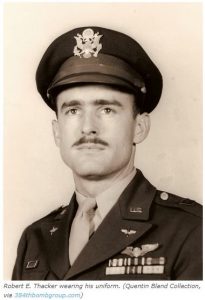
With the European air war winding down, Thacker was ordered to Okinawa to prepare for the Mighty Eighth’s transfer to the Pacific, and while on his way to the U.S. by ship, the world celebrated V-E Day. Thacker was at Wright Field in Dayton, Ohio when the atomic bombs were dropped, quickly bringing about an end to the war and nullifying his orders to report to Okinawa.
Being at the right place at the right time, Thacker attended the Wright Field Experimental Test Flight Academy, where he unwittingly found himself in the same class with Bob Hoover and Chuck Yeager and the trio became lifelong friends. Upon graduation, Thacker was assigned to the Accelerated Service Test Division One where he would “wring out” the newest aircraft the USAAF had to offer. However, it was a test flight in 1947 that brought him everlasting fame.
Flight From Hawaii
Hickam Field was a recurring pivot point in Robert Thacker’s life, but in 1947 it was to take part in aviation fame rather than infamy. Lt. Col. Thacker worked with North American Aviation’s engineers to prepare P-82B Twin Mustang, USAAF #44-65168 for a world record long distance flight attempt. To save weight, armor and weapons were removed and its internal fuel capacity was increased by 400-gallons, an increase of 70%. In addition, a quartet of massive 310-gallon drop tanks were fitted under the wings. The intent was to fly the aircraft nonstop from Hawaii to New York, an unprecedented feat for the time. Christened Betty-Jo, after Thacker’s wife, the aircraft‘s gross takeoff weight was 30,000 pounds, nearly half of which was fuel, was a full 5,000 pounds over the manufacturer’s design maximum load capacity, also a world record at the time.
At 3:30pm on February 27, 1947, Thacker and his co-pilot, Lt. John Ard, coaxed Betty-Jo off Hickam Field’s runway and headed east for LaGuardia Airport, New York, which lay over 14 hours and 5,051 miles away. Several technical problems emerged in flight, most famously a mechanical glitch that prevented three of the four drop tanks from being released once they were empty. The unwelcome extra drag and troublesome induced yaw could have led to a failure of the flight’s objectives, but fortunately the skilled and experienced test pilots overcame these issues as well as other unexpected challenges. At 11:08am on February 28th, Thacker and Ard touched down at LaGuardia airport with just 62 gallons (thirty minutes) of fuel remaining. Enough fuel for just another thirty minutes in the air.
Average speed for the flight was 350-mph. Today, nearly 74 years later, two of Betty Jo’s records still stand: 1) longest non-stop flight by a propeller driven aircraft, 2) fastest non-stop flight from Hawaii to New York by a propeller driven aircraft.
Today, at the National Museum of the U.S. Air Force at Wright-Patterson AFB in Dayton, Ohio, there are two North American Twin Mustangs on display. The first is a black F-82G night fighter, and the other is Betty-Jo, which was turned over to the museum in 1957. On display in front of Betty-Jo is a display case with Lt. Col. Robert Thacker’s A-2 jacket and the flight boots he wore during the flight.
Later Career
As a career Air Force man, Thacker went on to the Air Command and Staff School in 1948. During the Korean War, Thacker flew bombing missions in the B-29 Superfortress. Nearing retirement during the Vietnam War, Thacker, who was then a full Colonel, contributed by flying high-altitude, classified reconnaissance missions snooping for nuclear fissionable material in the atmosphere.
In 1970, after 31 years of tireless and valiant service, Colonel Robert Thacker retired from the Air Force. He and Betty-Jo moved to the coastal town of San Clemente where they would live out the rest of their lives. Robert was very active in his community, served as an advisor to the aviation industry all while pursuing his hobby of flying radio-controlled model airplanes. Robert was so skilled with his model aircraft that aerospace companies often contracted with him to build ¼ scale models of various designs they were working on. Adding to a long list of honors, Thacker was inducted into the Academy of Model Aeronautics Hall of Fame in 2010. Sadly, Betty-Jo passed away in 2011. They are survived by thier daughter, Barbara.
Later Career
As a career Air Force man, Thacker went on to the Air Command and Staff School in 1948. During the Korean War, Thacker flew bombing missions in the B-29 Superfortress. Nearing retirement during the Vietnam War and now a full Colonel, Thacker contributed by flying high-altitude, classified reconnaissance missions snooping for nuclear fissionable material in the atmosphere.
In 1970, after 31 years of tireless and valiant service, Colonel Robert Thacker retired from the Air Force. He and Betty-Jo moved to the coastal town of San Clemente, CA just south of Orange County, a place they would call home for the rest of their lives. Robert was very active in his community, served as an advisor to the aviation industry all while pursuing his hobby of flying Radio-Controlled model airplanes. Robert was so skilled with his model aircraft that aerospace companies often contracted with him to build ¼ scale models of various designs they were working on. Adding to a long list of honors, Thacker was inducted into the Academy of Model Aeronautics Hall of Fame in 2010. Sadly, Betty-Jo passed in 2011. They are survived by a daughter, Barbara.







